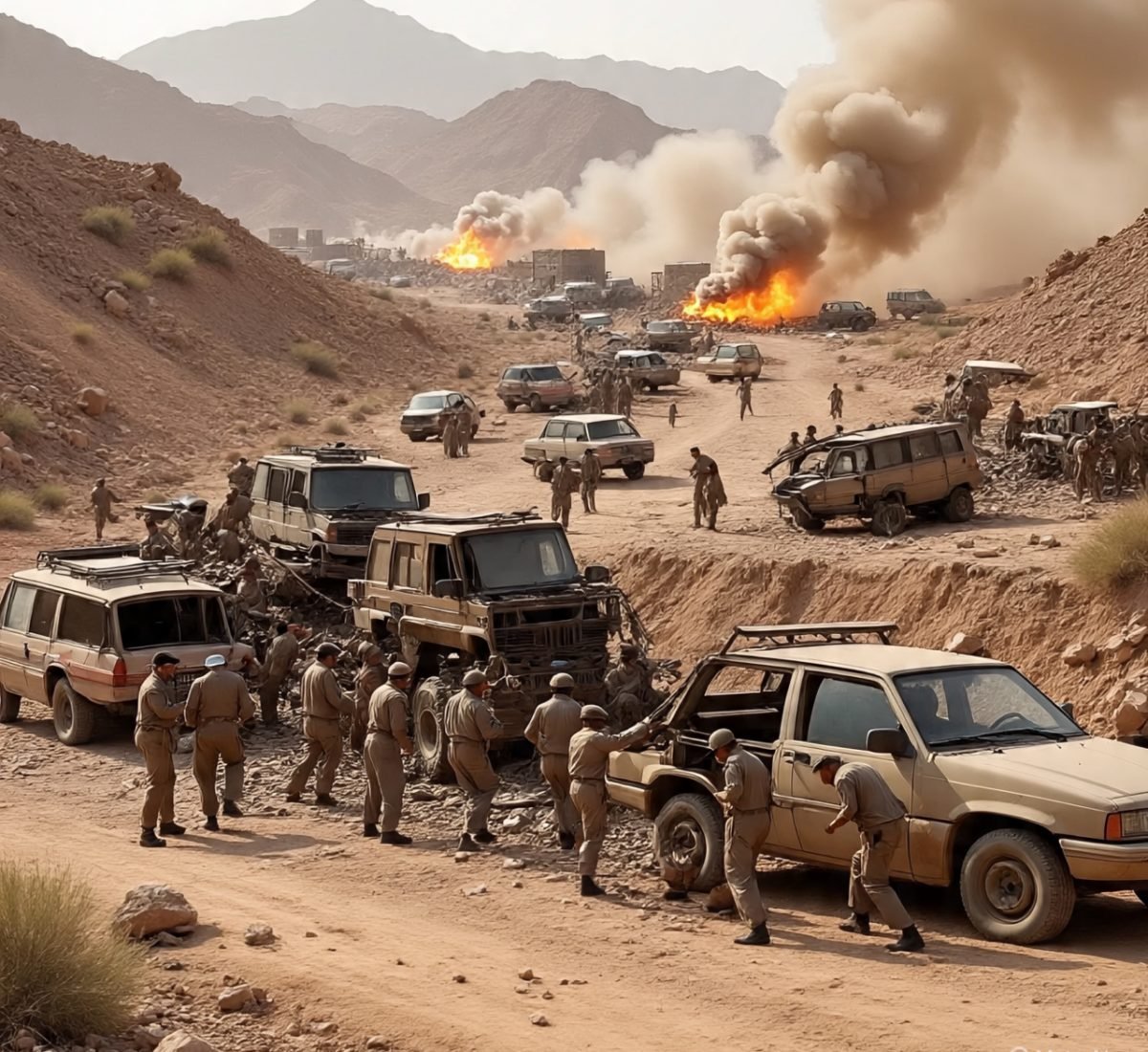Baloch Liberation Army attacks military convoy, outposts in Kalat, Turbat, Pakistan.

Table of Contents
Introduction
Today’s Bloodshed in Balochistan
In a series of deadly coordinated attacks, the Baloch Liberation Army (BLA) has inflicted significant casualties on Pakistani military forces in the Kalat and Turbat districts of Balochistan, highlighting a sharp escalation in the province’s long-running insurgency.
The attacks included an IED blast targeting a military convoy near Mach Kachhi in Kalat, and a devastating suicide vehicle-borne IED (VBIED) attack in the Bahman area near Turbat, reportedly executed by the BLA’s notorious Majeed Brigade.
Casualties and Tactical Impact
According to official sources and militant claims:
Kalat IED Attack: At least 8 Pakistan Army personnel, including a Special Operations commander, were killed. Six others were injured.
Turbat VBIED Attack: The BLA claims 47 security personnel were killed and more than 30 injured after a suicide bomber rammed a vehicle into a convoy that included troop transport buses.
Additional Ambushes: Reports also mention 18 Frontier Corps (FC) personnel killed during a separate ambush in Kalat, while a female suicide bomber detonated near an FC convoy, killing one and injuring four more.
These coordinated strikes, using both male and female suicide attackers, IEDs, and ambushes, reflect a disturbing increase in tactical capability and ideological commitment by separatist forces.
BLA’s Claims and Objectives
The Majeed Brigade, the BLA’s elite “Fidayeen” suicide wing, claimed responsibility for the Turbat attack. It named the suicide bomber as Bahar Ali, who reportedly monitored military convoys departing from Karachi and executed the strike with precision.
The Kalat attack involved a female suicide bomber, an increasingly common tactic meant to bypass traditional security barriers.
The BLA stated that these operations were carried out to “undermine Pakistan’s military occupation” and “make Balochistan ungovernable.” The group continues to target military infrastructure, convoys, and resource extraction projects—symbolic of what it calls “state exploitation of Baloch resources.”
Military Response and Counter-Operations
In the aftermath, Pakistani military and paramilitary units, led by the Frontier Corps and Army, launched counter-insurgency operations across affected areas. Key elements of the response included:
Area cordons and combing operations
Deployment of reinforcements
Aerial surveillance and sanitization efforts
Search-and-destroy patrols along highways and convoy routes
However, the scale and coordination of the attacks suggest the militants had detailed intelligence and the ability to exploit weaknesses in military planning.
Context: A Region Under Siege
Balochistan has long been a hotspot for ethno-nationalist insurgencies, with the BLA and other groups opposing what they see as economic marginalization and military dominance. The region’s strategic importance—home to CPEC routes, Gwadar Port, and rich mineral deposits—makes it a focal point for both investment and insurgent activity.
Recent months have seen a surge in suicide attacks, particularly against convoy routes and infrastructure associated with state presence or foreign investment.
What This Means
The high death toll, including elite forces, is a major blow to Pakistani military morale and a sign of deep vulnerabilities in counterinsurgency operations.
The use of female suicide bombers reflects a tactical evolution designed to exploit perceived gaps in security screening.
The attacks are likely to prompt a reassessment of military logistics, with more emphasis on convoy protection, intelligence gathering, and route security.
Politically, these strikes could further isolate the region and complicate any attempts at reconciliation or development.
Frequently Asked Questions (FAQs)
1. Who carried out the attacks in Balochistan?
The Baloch Liberation Army (BLA), specifically its suicide wing known as the Majeed Brigade, claimed responsibility for the coordinated IED and suicide attacks.
2. What areas were targeted?
Military convoys and outposts in Kalat (near Mach Kachhi) and Turbat (Bahman area) in Balochistan were attacked.
3. How many were killed or injured?
At least 8 soldiers were confirmed dead in Kalat; the BLA claims 47 more were killed in Turbat. Over 30 personnel were reportedly injured across both attacks.
4. What is the BLA’s motive?
The BLA opposes Pakistani control over Balochistan, citing political oppression and resource exploitation. Its aim is to make the province ungovernable for the Pakistani state.
5. What was unique about these attacks?
The coordinated nature, high casualties, and use of female suicide bombers mark a significant tactical escalation by the BLA.
6. How have Pakistani forces responded?
The Army and Frontier Corps have launched sweeping counter-operations, sealing off affected zones and searching for remaining militants.
